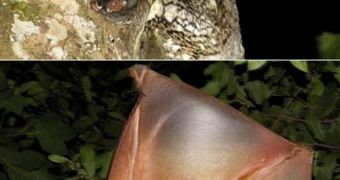Human are primates. Our closest relatives are the apes, monkeys and lemurs. But the question is: which group of mammals is closest to primates?
A new genetic research claims to have closed the debate: it's not the tree shrews, once even included amongst the primates, but the colugos, also called flying lemurs, squirrel-sized tree dwellers inhabiting the forests of Southeast Asia to Philippines. There are two species of colugo, and even if they do not really fly but glide (they have the most extensive gliding membrane amongst all gliding animals), it appears now that they are indeed related to lemurs.
Previous genetic research had showed that primates, tree shrews, and colugos do form an evolutionary grouping rooted in a common ancestral group, but it was not known the order in which the three groups split from one another. Now it seems that tree shrews were the earliest to diverge, while primates and colugos did it later, both groups being thus closest evolutionary cousins. "Our molecular trees indicate that [primates [admark=1]and colugos] split approximately 86 million years ago, more than 30 million years before modern primates or colugos appear in the fossil record," said co-author William Murphy.
The German and American researchers from Texas A&M University have published the study in the journal Science. The team found seven mutations common between primates and colugos, while only one was shared between primates and tree shrews. "Such a discrepancy is likely only if primates and colugos had a more recent common ancestor not shared with tree shrews," the researchers wrote.
A computer analysis focused on DNA sequence variations in 19 genes comprising 14,000 DNA nucleotide base pairs, and came with the same result. "Our data suggest that a draft genome sequence of the colugo will be critical for understanding the changes in the genomes that led to early primates and provide a backdrop to those changes that ultimately led to humankind," said Murphy.
"The new study is important, but it may not completely settle the debate over which mammal group is most closely related to primates. One previous study examined an equally large genetic data set, but reached different conclusions. [Both studies] are part of the Mammal Tree of Life project, which will include analysis of more taxa and more data. The results of this larger collaboration may yield a different result than the one being published this week," said Eric Sargis of Yale University in New Haven, Connecticut, not involved in this study.
Modern primates share many traits: grasping hands, five-nailed rather than clawed fingers, forward-facing eyes, color vision, diurnal life and large brains, but these characteristics could have been absent in the first primates. "The ancestors of early primates, colugos, and tree shrews did not resemble their modern forms. The [physical] changes that led to the appearance of modern primates and flying lemurs happened millions of years after the genetic changes that divided the two lineages in the Cretaceous period (the last dinosaur era). The living creature that has retained the greatest physical similarity to the ancient common ancestor of all tree shrews, colugos, and primates may be the pen-tail tree shrew of Southeast Asia," said Murphy.
This DNA research has found that the pen-tail tree shrew lineage separated from the other tree shrews soon after the dinosaur extinction. "We suggest that a global priority be placed on the conservation of the pen-tail tree shrew and its habitat, as extinction of this one species would result in the loss of a 63-million-year-old lineage", Murphy added.

 14 DAY TRIAL //
14 DAY TRIAL //